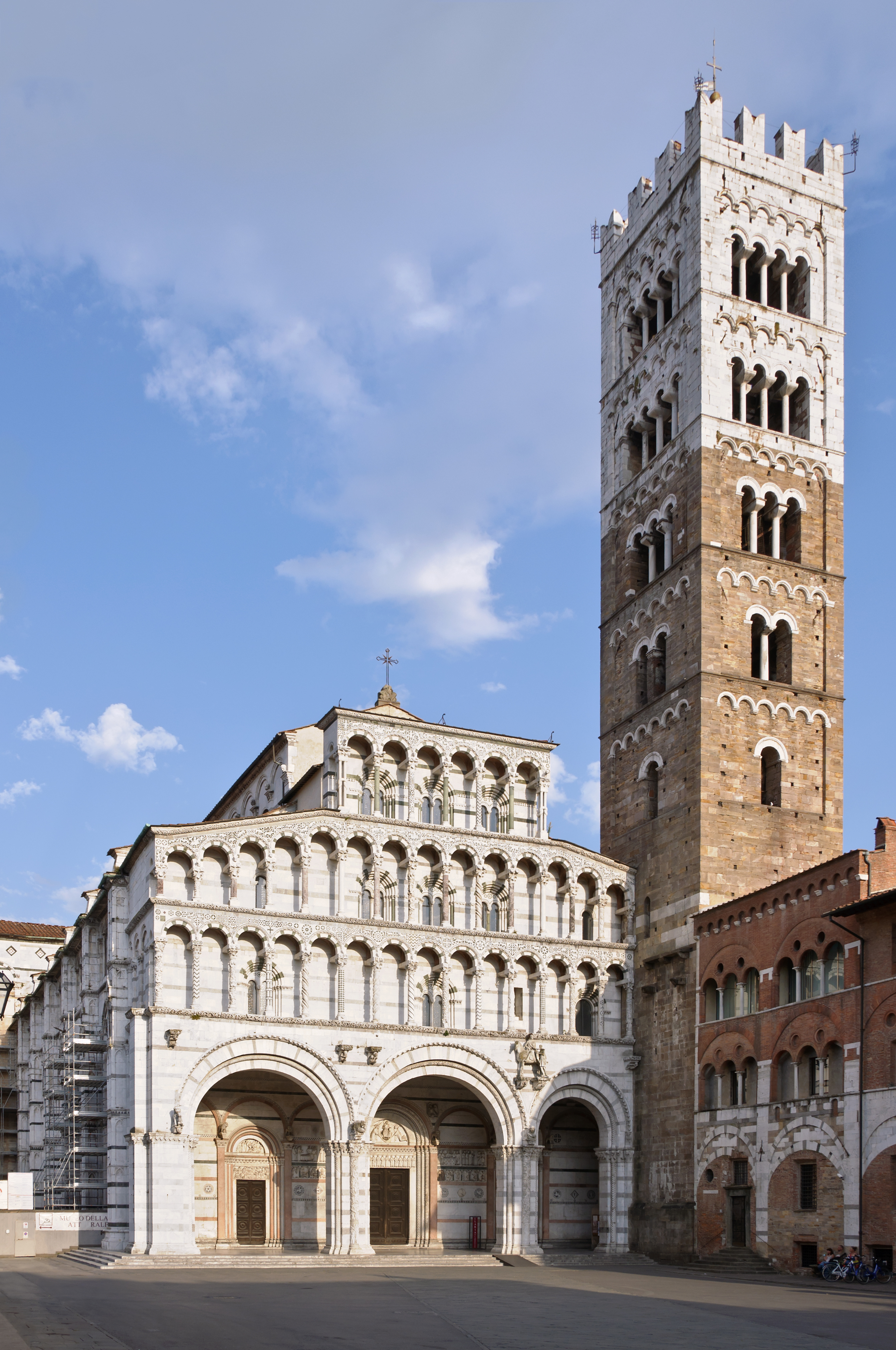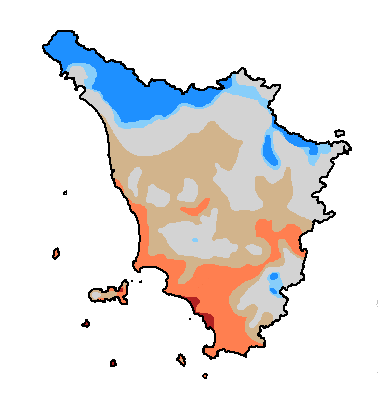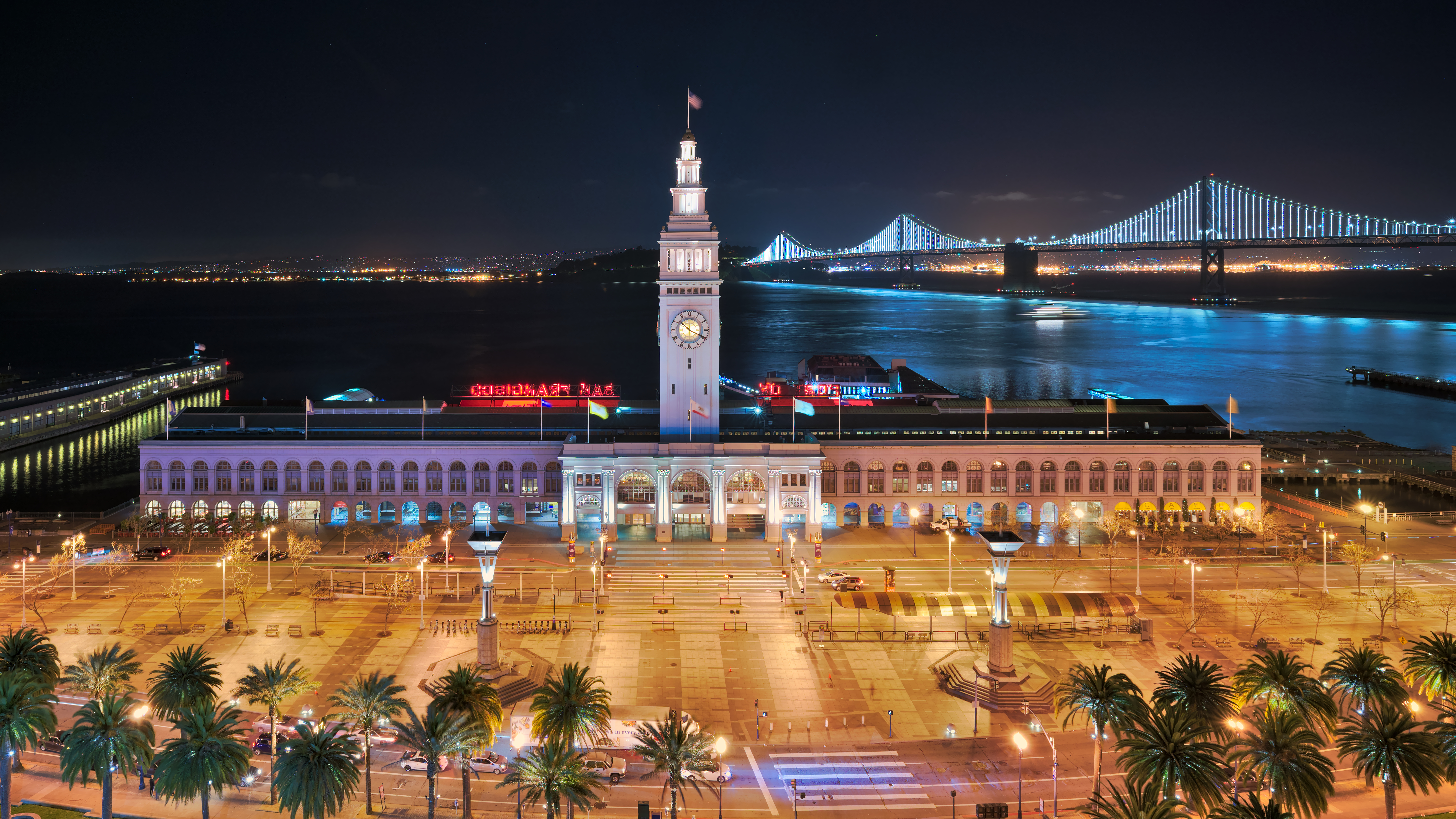|
Palazzo Tucci
Palazzo Tucci is an 18th-century palace in central Lucca, Region of Tuscany, Italy. History A number of medieval houses at this site were linked by the ownership of the Tucci family, and in 1780, with the marriage of Giuseppe Tucci to the daughter of the aristocrat Giuseppe Guinigi, the former commissioned a reconstruction by Ottaviano Diodati. The façade style transitions from late Baroque architecture to Neoclassicism. The portal has the coat of arms of the family. The erudite Diodati who was active in theater and garden design, added decorative and dramatic effects to the interior and exterior, including the entrance stairwell. Rooms have the somewhat restrained stucco decoration of the period. The main room has a ceiling frescoed with ''Flora and the Four Seasons''. This and other canvases were mainly by Giovanni Domenico Paladini. The palace is still owned by the Tucci family and houses a small hotel. The musician Alfredo Catalani was born in this palace. [...More Info...] [...Related Items...] OR: [Wikipedia] [Google] [Baidu] |
Lucca
Lucca ( , ) is a city and ''comune'' in Tuscany, Central Italy, on the Serchio River, in a fertile plain near the Ligurian Sea. The city has a population of about 89,000, while its province has a population of 383,957. Lucca is known as one of the Italian's "Città d'arte" (Arts town), thanks to its intact Renaissance-era city walls and its very well preserved historic center, where, among other buildings and monuments, are located the Piazza dell'Anfiteatro, which has its origins in the second half of the 1st century A.D. and the Guinigi Tower, a tower that dates from the 1300s. The city is also the birthplace of numerous world-class composers, including Giacomo Puccini, Alfredo Catalani, and Luigi Boccherini. Toponymy By the Romans, Lucca was known as ''Luca''. From more recent and concrete toponymic studies, the name Lucca has references that lead to "sacred wood" (Latin: ''lucus''), "to cut" (Latin: ''lucare'') and "luminous space" (''leuk'', a term used by ... [...More Info...] [...Related Items...] OR: [Wikipedia] [Google] [Baidu] |
Tuscany
it, Toscano (man) it, Toscana (woman) , population_note = , population_blank1_title = , population_blank1 = , demographics_type1 = Citizenship , demographics1_footnotes = , demographics1_title1 = Italian , demographics1_info1 = 90% , demographics1_title2 = , demographics1_info2 = , demographics1_title3 = , demographics1_info3 = , timezone1 = CET , utc_offset1 = +1 , timezone1_DST = CEST , utc_offset1_DST = +2 , postal_code_type = , postal_code = , area_code_type = ISO 3166 code , area_code = IT-52 , blank_name_sec1 = GDP (nominal) , blank_info_sec1 = €118 billion (2018) , blank1_name_sec1 = GDP per capita , blank1_info_sec1 = €31,500 (2018) , blank2_name_sec1 = HDI (2019) , blank2_info_sec1 = 0.907 • 6th of 21 , blank_name_sec2 = NUTS Region , blank_info_sec2 ... [...More Info...] [...Related Items...] OR: [Wikipedia] [Google] [Baidu] |
Italy
Italy ( it, Italia ), officially the Italian Republic, ) or the Republic of Italy, is a country in Southern Europe. It is located in the middle of the Mediterranean Sea, and its territory largely coincides with the homonymous geographical region. Italy is also considered part of Western Europe, and shares land borders with France, Switzerland, Austria, Slovenia and the enclaved microstates of Vatican City and San Marino. It has a territorial exclave in Switzerland, Campione. Italy covers an area of , with a population of over 60 million. It is the third-most populous member state of the European Union, the sixth-most populous country in Europe, and the tenth-largest country in the continent by land area. Italy's capital and largest city is Rome. Italy was the native place of many civilizations such as the Italic peoples and the Etruscans, while due to its central geographic location in Southern Europe and the Mediterranean, the country has also historically b ... [...More Info...] [...Related Items...] OR: [Wikipedia] [Google] [Baidu] |
Ottaviano Diodati
Ottaviano ( nap, Uttajano) is a ''comune'' (municipality) in the Metropolitan City of Naples in the Italian region Campania, located about east of Naples and is located in the Vesuvian Area. Ottaviano was in Roman times a hamlet of houses within a vast estate (praedium Octaviorum) belonging to the gens Octavia, Augustus's family. The territory of the country includes most of the crater of Vesuvius. The Medici Castle in Ottaviano houses the headquarters of the National Park of Vesuvius. Ottaviano suffered significant destruction during the 1944 eruption of neighboring Mount Vesuvius. Now the city is home to the center office of Vesuvius National Park. History Ottaviano was in Roman times a hamlet of houses within a vast estate (''praedium Octaviorum)'' belonging to the gens Octavia, Augustus's family. The territory was the scene of a battle between Lucius Cornelius Sulla and Lucius Cluentius in 90 BC, during the Social War. On the territory of Ottaviano, during the Third Se ... [...More Info...] [...Related Items...] OR: [Wikipedia] [Google] [Baidu] |
Baroque Architecture
Baroque architecture is a highly decorative and theatrical style which appeared in Italy in the early 17th century and gradually spread across Europe. It was originally introduced by the Catholic Church, particularly by the Jesuits, as a means to combat the Reformation and the Protestant church with a new architecture that inspired surprise and awe. It reached its peak in the High Baroque (1625–1675), when it was used in churches and palaces in Italy, Spain, Portugal, France, Bavaria and Austria. In the Late Baroque period (1675–1750), it reached as far as Russia and the Spanish and Portuguese colonies in Latin America. About 1730, an even more elaborately decorative variant called Rococo appeared and flourished in Central Europe. Baroque architects took the basic elements of Renaissance architecture, including domes and colonnades, and made them higher, grander, more decorated, and more dramatic. The interior effects were often achieved with the use of '' quadratura ... [...More Info...] [...Related Items...] OR: [Wikipedia] [Google] [Baidu] |
Neoclassical Architecture
Neoclassical architecture is an architectural style produced by the Neoclassical movement that began in the mid-18th century in Italy and France. It became one of the most prominent architectural styles in the Western world. The prevailing styles of architecture in most of Europe for the previous two centuries, Renaissance architecture and Baroque architecture, already represented partial revivals of the Classical architecture of ancient Rome and (much less) ancient Greek architecture, but the Neoclassical movement aimed to strip away the excesses of Late Baroque and return to a purer and more authentic classical style, adapted to modern purposes. The development of archaeology and published accurate records of surviving classical buildings was crucial in the emergence of Neoclassical architecture. In many countries, there was an initial wave essentially drawing on Roman architecture, followed, from about the start of the 19th century, by a second wave of Greek Revival archi ... [...More Info...] [...Related Items...] OR: [Wikipedia] [Google] [Baidu] |
Giovanni Domenico Paladini
Giovanni Domenico Paladini ( Lucca, 1721 - Lucca, 1772) was an Italian painter. Biography He trained under Giovanni Domenico Lombardi Giovanni Domenico Lombardi (1682–1751) was an Italian painter of the late-Baroque period in Lucca. His work shows the influence of rising neoclassicism but enveloped by an attention to Caravaggist quotations. He was a pupil of Giovanni Marracci .... He painted figures, animals, and still-life. He was also an actor in comedies. by Pellegrino Antonio Orlandi, published by Stamperia Allegrini, Pisoni, e comp, Florence (1776); column 1357. References [...More Info...] [...Related Items...] OR: [Wikipedia] [Google] [Baidu] |
Alfredo Catalani
Alfredo Catalani (19 June 1854 – 7 August 1893) was an Italian operatic composer. He is best remembered for his operas '' Loreley'' (1890) and ''La Wally'' (1892). ''La Wally'' was composed to a libretto by Luigi Illica, and features Catalani's most famous aria "Ebben? Ne andrò lontana." This aria, sung by American soprano Wilhelmenia Fernandez, was at the heart of Jean-Jacques Beineix's 1981 film ''Diva''. Catalani's other operas were much less successful. Life and career Born in Lucca, Catalani came from a musical family. He was trained at the Milan Conservatory, where his teachers included Antonio Bazzini. Despite the growing influence of the ''verismo'' style of opera during the 1880s and early 1890s, Catalani chose to compose in a more traditional manner, which had traces of Richard Wagner, Wagner in it. As a result, his operas (''La Wally'' excepted) have largely lost their place in the modern repertoire, even compared to those of Jules Massenet, Massenet and Giacomo P ... [...More Info...] [...Related Items...] OR: [Wikipedia] [Google] [Baidu] |
Neoclassical Architecture In Tuscany
Neoclassical or neo-classical may refer to: * Neoclassicism or New Classicism, any of a number of movements in the fine arts, literature, theatre, music, language, and architecture beginning in the 17th century ** Neoclassical architecture, an architectural style of the 18th and 19th centuries ** Neoclassical sculpture, a sculptural style of the 18th and 19th centuries ** New Classical architecture, an overarching movement of contemporary classical architecture in the 21st century ** in linguistics, a word that is a recent construction from New Latin based on older, classical elements * Neoclassical ballet, a ballet style which uses traditional ballet vocabulary, but is generally more expansive than the classical structure allowed * The "Neo-classical period" of painter Pablo Picasso immediately following World War I * Neoclassical economics, a general approach in economics focusing on the determination of prices, outputs, and income distributions in markets through supply and dem ... [...More Info...] [...Related Items...] OR: [Wikipedia] [Google] [Baidu] |
Infrastructure Completed In 1780
Infrastructure is the set of facilities and systems that serve a country, city, or other area, and encompasses the services and facilities necessary for its economy, households and firms to function. Infrastructure is composed of public and private physical structures such as roads, railways, bridges, tunnels, water supply, sewers, electrical grids, and telecommunications (including Internet connectivity and broadband access). In general, infrastructure has been defined as "the physical components of interrelated systems providing commodities and services essential to enable, sustain, or enhance societal living conditions" and maintain the surrounding environment. Especially in light of the massive societal transformations needed to mitigate and adapt to climate change, contemporary infrastructure conversations frequently focus on sustainable development and green infrastructure. Acknowledging this importance, the international community has created policy focused on sustainab ... [...More Info...] [...Related Items...] OR: [Wikipedia] [Google] [Baidu] |
Historic House Museums In Italy
History (derived ) is the systematic study and the documentation of the human activity. The time period of event before the invention of writing systems is considered prehistory. "History" is an umbrella term comprising past events as well as the memory, discovery, collection, organization, presentation, and interpretation of these events. Historians seek knowledge of the past using historical sources such as written documents, oral accounts, art and material artifacts, and ecological markers. History is not complete and still has debatable mysteries. History is also an academic discipline which uses narrative to describe, examine, question, and analyze past events, and investigate their patterns of cause and effect. Historians often debate which narrative best explains an event, as well as the significance of different causes and effects. Historians also debate the nature of history as an end in itself, as well as its usefulness to give perspective on the problems of the p ... [...More Info...] [...Related Items...] OR: [Wikipedia] [Google] [Baidu] |



_-_facade_on_Piazza_dei_signori.jpg)


.jpg)